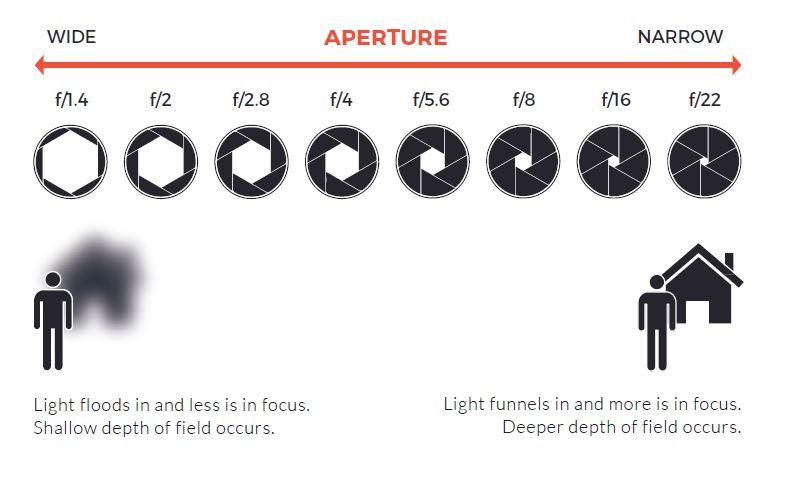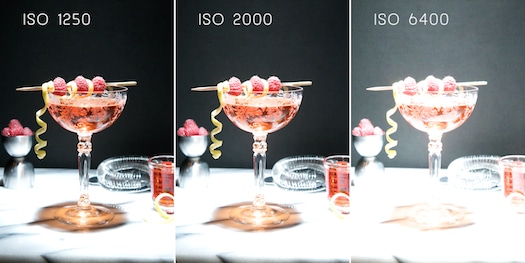Part 1: Hướng dẫn về nhiếp ảnh cơ bản cho người mới bắt đầu
[English below] Mỗi khi nhắc đến nhiếp ảnh, chúng ta đều cảm thấy có quá nhiều kiến thức để tìm hiểu và ghi nhớ. Đặc biệt, đối với những ai đang bắt đầu bước vào thế giới nhiếp ảnh, đôi khi bạn sẽ phải đối mặt với “khối” lý thuyết khô khan, nhàm chán.
Để quá trình tìm hiểu về nhiếp ảnh của bạn trở nên đơn giản hơn, Tròn House sẽ tổng hợp những kiến thức cơ bản về nhiếp ảnh qua bài viết dưới đây dựa trên kinh nghiệm nhiều năm trong lĩnh vực sản xuất hình ảnh nhé!
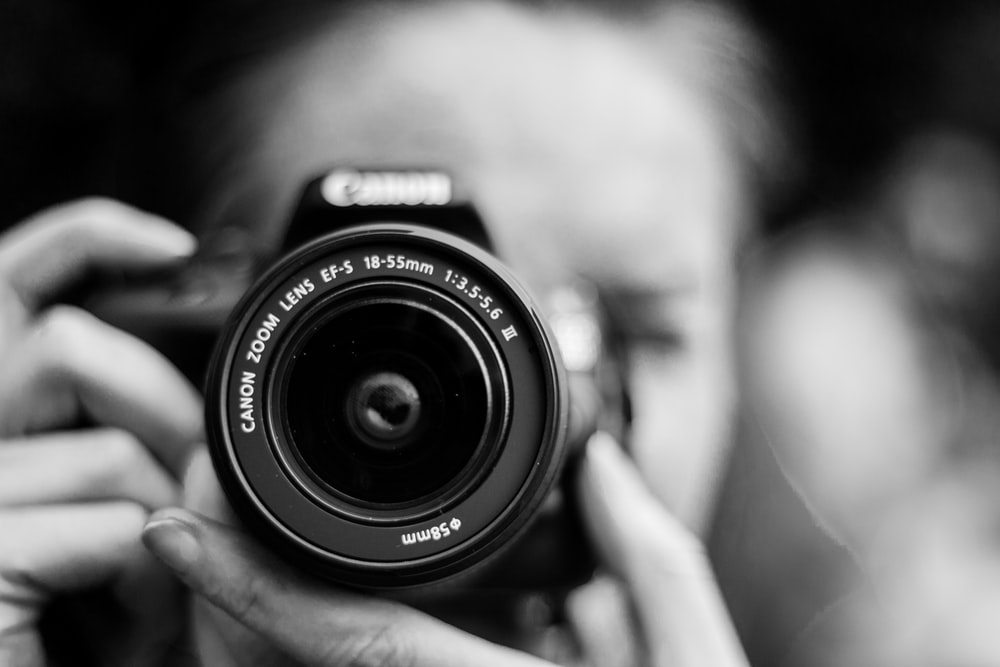 |
- Exposure (Sự phơi sáng)
Đối với những người mới bắt đầu chụp ảnh, exposure chính là chìa khóa để tạo ra một bức ảnh đẹp. Tìm hiểu về cách thức hoạt động của exposure sẽ giúp bạn kiểm soát máy ảnh và chụp ảnh tốt hơn.
Khẩu độ (Aperture), Tốc độ màn trập (Shutter Speed) và ISO là ba yếu tố kết hợp để tạo ra độ phơi sáng. Các yếu tố trên còn có thể gây ra sự thay đổi về độ sâu trường ảnh (Depth of Field) và chuyển động mờ (Motion Blur).
- Aperture: Mức độ mở của khẩu độ ống kính. Ống kính mở càng lớn thì ánh sáng vào sensor (cảm biến) càng nhiều và ảnh càng sáng hơn.
- Shutter Speed: Thời gian mở cửa trập máy ảnh. Thời gian mở dài, ánh sáng vào nhiều, ảnh sẽ sáng hơn.
- ISO: Mức độ nhạy của sensor với ánh sáng. ISO càng cao thì sensor càng bắt được nhiều ánh sáng trong cùng 1 khoảng thời gian.
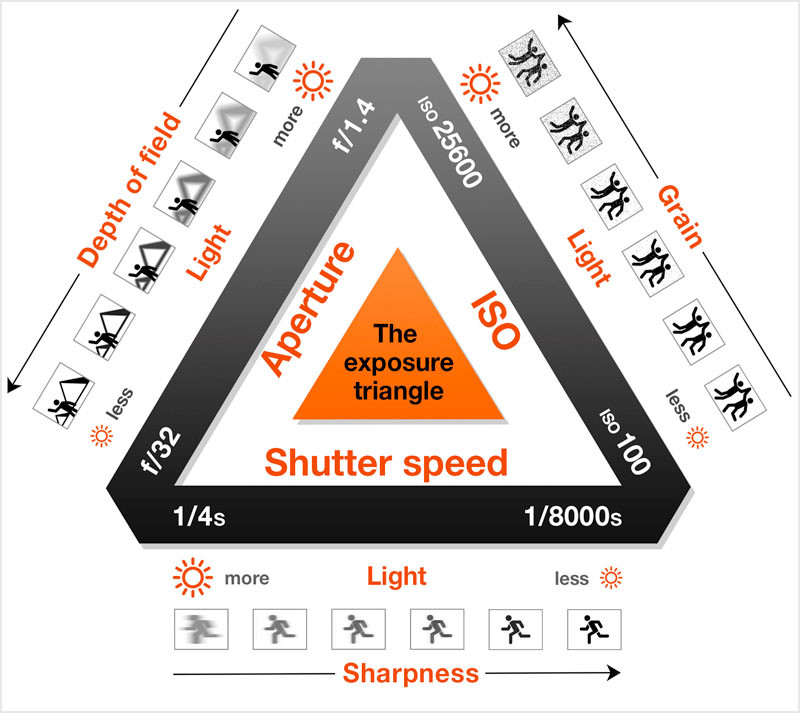 |
Vì vậy, khi chúng ta thay đổi 1 trong 3 yếu tố này thì các yếu tố khác cũng cần phải thay đổi theo để giữ nguyên được exposure của bức ảnh. Ví dụ, khi tăng ISO gấp đôi và giữ nguyên Aperture, bạn cần giảm Shutter Speed đi một nửa.
Đối với những ai đang làm quen với máy ảnh, Tròn House gợi ý bạn nên để máy ảnh ở Manual Mode, và tập thay đổi các thông số trên, tự so sánh để hiểu rõ hơn.
- Aperture (Khẩu độ của ống kính)
Ánh sáng vào cảm biến (sensor) càng nhiều thì ảnh càng sáng và ngược lại. Do đó, khẩu độ là yếu tố giúp kiểm soát được lượng ánh sáng vào máy ảnh vừa đủ để có được bức ảnh đẹp. Khẩu độ là một loạt các lá thép nằm ngay trong ống kính. Các lá thép này có thể co vào và mở ra tương ứng với việc cho phép ánh sáng vào nhiều hay ít trong cùng 1 khoảng thời gian.
|
Source: City Academy |
Khẩu độ được ký hiệu là F/X (trong đó: X là độ mở của ống kính được ghi bằng con số cụ thể, ví dụ F/2; F/1.8; F/4…). Giá trị của X càng nhỏ thì khẩu độ càng lớn.
Ví dụ, F/2 sẽ lớn hơn F/4. F ở đây là 1F. Để dễ hiểu hơn, 1F/2 = 0.5 sẽ lớn hơn 1F/4 = 0.25.
Khẩu độ lớn thì ánh sáng đi vào cảm biến nhiều hơn, giúp hình ảnh đỡ bị nhiễu hạt và rung, mờ khi thiếu sáng. Tuy nhiên, không phải lúc nào chúng ta cũng nên mở khẩu độ tối đa bởi một số ống kính không nét căng tại khẩu độ lớn nhất.
- Shutter Speed (Tốc độ màn trập)
Ánh sáng sau khi đi qua lá khẩu độ (Aperture) thì sẽ tới gặp màn trập (Shutter). Màn trập là một bộ phận có thể đóng vào mở ra, từ đó cho phép ánh sáng đi vào sensor. Màn trập có thể mở và đóng lại nhanh hoặc chậm tương đương với việc để cho ánh sáng vào sensor nhiều hay ít, ảnh chúng ta sẽ tối và sáng tương ứng. Khi cửa trập mở và đóng nhanh, điều này có nghĩa là tốc độ chụp nhanh và ngược lại.
Các chỉ số chỉ tốc độ màn trập là con số tỷ lệ so với 1 giây. Ví dụ, 500 nghĩa là 1/500 giây. Chẳng hạn, khi chụp ảnh trẻ em đang chạy nhảy, nếu tốc độ màn trập bạn để thấp hơn 1/100 giây thì sẽ có những đường vệt dài cho chuyển động mà máy chưa bắt nét hết do tốc độ chụp quá thấp.
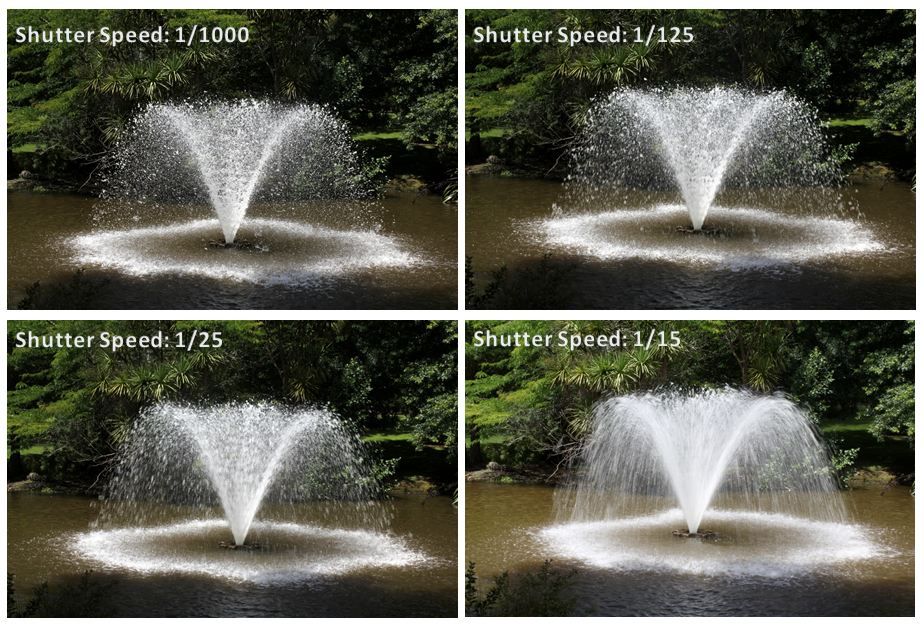 |
ISO (Độ nhạy sáng của máy ảnh)
Khi ánh sáng đi qua khẩu độ và được lọc bằng tốc độ màn trập, nó sẽ chạm tới cảm biến (sensor). Đây chính là nơi chúng ta quyết định cách cài đặt ISO. Thông thường, ISO thấp nhất ở các loại máy ảnh hiện nay từ 50-200, và có thể cao đến 256000. Đối với những địa điểm chụp có điều kiện ánh sáng tốt, bạn có thể cài đặt ISO thấp nhất. Ngược lại, ở những nơi thiếu sáng, bạn cần tăng ISO lên để bù sáng. Tuy nhiên, ISO càng cao thì chất lượng hình ảnh sẽ giảm, bị noise (nhiễu ảnh, lốm đốm, mất nét).
|
Source: Rice Couple |
White Balance (Cân bằng trắng)
White Balance là nhiệt độ màu của ảnh. Đôi lúc, bạn sẽ thấy hình bị ám xanh dương hay ám vàng. Đa phần, máy ảnh thường nhận định ánh sáng không chính xác hoặc bị ảnh hưởng bởi các loại ánh đèn màu khác nhau.
Nhiệt độ màu được tính bằng nhiệt độ K (Kelvin) và nằm trong khoảng từ 1000 -> 10000. Ở nhiệt độ 1000, ảnh sẽ có màu đỏ cam. Càng tăng lên, ảnh sẽ chuyển từ từ sang màu vàng, sau đó thành xanh lá và đến xanh dương.
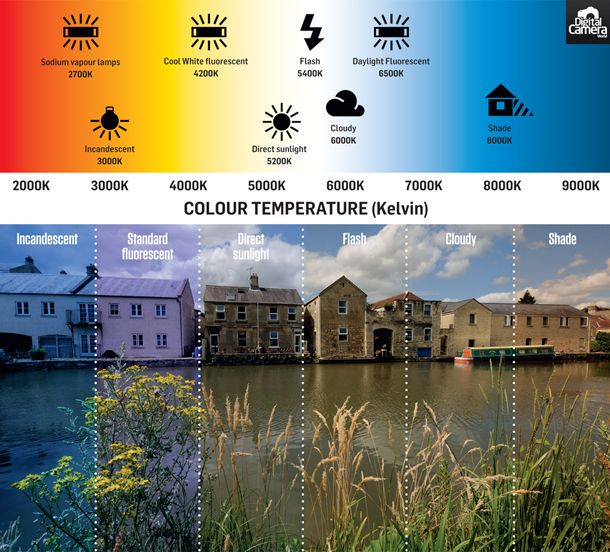 |
Độ sâu trường ảnh (Depth of Field: DoF)
Độ sâu trường ảnh chính là độ xóa phông của ống kính. Xóa phông càng nhiều thì DoF càng mỏng. Ví dụ, lens tele tiêu cự dài sẽ có DoF mỏng hơn lens wide tiêu cự ngắn.
Nếu muốn ảnh trở nên lung linh, bạn nên chỉnh độ sâu trường ảnh mỏng để phông nền được xóa nhiều hơn. Tuy nhiên, điều này dẫn đến nhược điểm là hình dễ bị out nét do DoF quá mỏng.
Do đó, khi chụp bạn có thể tăng tốc độ màn trập hoặc tăng độ nhạy sáng ISO. Đối với chụp phong cảnh, bạn hãy chỉnh khẩu độ xuống tầm F/8 hoặc nhỏ hơn để hình rõ nét.
- Các chế độ lấy nét trên máy ảnh
Ở máy ảnh có nhiều chế độ lấy nét khác nhau, tùy thuộc vào đối tượng và số lượng người chụp mà chúng ta sẽ chọn chế độ lấy nét cho phù hợp. Ví dụ, khi chụp portrait, bạn có thể chọn chế độ lấy nét theo điểm và lấy nét vào mắt của người mẫu. Khi chụp nhóm, bạn hãy dùng chế độ lấy nét 3D, hoặc chế độ tận dụng hết số điểm lấy nét của máy. Bên cạnh đó, bạn có thể khép khẩu độ xuống để độ sâu trường ảnh dày hơn và nét đều nhiều người. Đối với chụp phong cảnh, bạn cũng chọn chế độ ưu tiên hết toàn bộ điểm lấy nét máy hỗ trợ nhé.
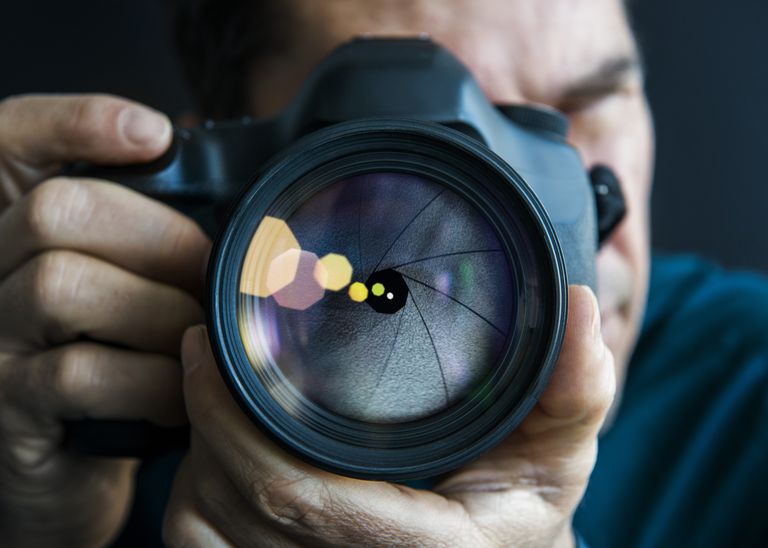 |
Sau khi đọc bài viết trên, bạn đã “note” lại những bài học cơ bản về nhiếp ảnh chưa? Nếu bạn mong muốn sở hữu những bức ảnh đẹp, hãy liên hệ Tròn House ngay nhé!
Xem thêm:
SỰ KHÁC BIỆT GIỮA VISUAL CONTENT VÀ CONTENT WRITING TRONG CHIẾN LƯỢC MARKETING
UNIQLO ĐÃ ĐỒNG HÀNH CÙNG SLOGAN “MADE FOR ALL” NHƯ THẾ NÀO?
BÍ QUYẾT CHỤP HÌNH SẢN PHẨM GIÚP DOANH SỐ BÁN HÀNG TĂNG VÙN VỤT
TRÒN HOUSE
PART 1: PHOTOGRAPHY BASIC: THE BEGINNER'S GUIDE
Every time we mention photography, feeling that we have too much knowledge to learn and remember. In particular, for those who are starting to enter the world of photography, sometimes they have to face with many dry, boring and abstract theories..
To make the process of learning about your photography easier, Tron House will summarize the basics of photography through the following article based on years of experience in the field of image production!
 |
Exposure: For beginners, exposure is key to creating a great photo. Learning how exposure works and you can take control of the camera and take better pictures.
Aperture, Shutter Speed and ISO are the three factors that combine to create exposure. These factors can also cause changes in the depth of field and motion blur.
Aperture: Represents a “pupil” in your lens that can open and close to let in different amounts of light. The bigger the open, the more light into the sensor, the brighter the image will be.
Shutter Speed: The amount of time your camera sensor is exposed to the world while taking a picture. The longer the open time is, the more light there is, the brighter the image.
ISO: Technically a bit more complex, but similar to the sensitivity of film for taking pictures in different lighting conditions. The higher the ISO, the more light the sensor captures in the same amount of time.
 |
Therefore, when we change one of these three elements, the other elements also need to change accordingly to retain the exposure of the image. For example, when you double the ISO and keep Aperture, you need to reduce Shutter Speed by half.
For those who are learning to use the camera, Tron House recommends that you should set the camera in Manual Mode, practice changing the parameters above, comparing by yourself to understand completely.
Aperture (The aperture of the lens)
The more light on the sensor, the brighter the image and vice versa. Therefore, the aperture is a factor that helps control the amount of light entering the camera just enough to get good photos. Apertures are a series of steel foils located right inside the lens. The sheets of steel can retract and unfold in a way that allows more or less light to enter at the same time.
|
Source: City Academy |
The aperture is denoted as F/X (X is the aperture of the lens recorded by a specific number, for example F/2; F/1.8; F/4 ...). The smaller the value of X is, the larger the aperture is.
For example, F/2 will be bigger than F/4. F here is 1F. To make it easier to understand, 1F/2 = 0.5 will be bigger than 1F/4 = 0.25.
The larger the aperture, the more light goes into the sensor. It helps to prevent image noise, vibration and blur in low light. However, we should not always open the maximum aperture because some lenses are not sharp at the largest aperture.
Shutter Speed
The light after passing through the aperture leaf will come to the shutter. The shutter is a part that can open and close. It allows light to enter the sensor. The shutter can be opened and closed quickly or slowly equivalent to letting light into the sensor more or less, our image will be dark and bright respectively. When the shutter is opened and closed quickly, this means that the shutter speed is fast and vice versa.
The shutter speed indicator is a proportional number compared to 1 second. For example, 500 means 1/500 seconds. When photographing children run and jump, if your shutter speed is lower than 1/100 second, there will be long lines for movement that the camera has not fully captured because the shutter speed is too low.
 |
ISO (Light sensitivity of the camera)
When light passes through the aperture which is filtered by the shutter speed, it reaches the sensor. This is where we decide how to install the ISO. Typically, the lowest ISO available for current cameras ranges from 50-200, and can be as high as 256000. For locations with good lighting conditions, you can set the lowest ISO. In contrast, in low light areas, you need to increase the ISO to compensate. However, if the ISO is high, the image quality will be reduced (image noise, speckled, out of focus).
|
Source: Rice Couple |
White Balance
White Balance is the color temperature of an image. Sometimes, you will see the image is blue or yellow.That because the camera identified the light incorrectly or it is affected by different types of colored lights.
Color temperature is calculated by Kelvin temperature scale, ranges from 1000 -> 10000. At 1000, the image will be orange red. If you increase the color temperature, the image will change to yellow, green and blue.
|
|
Depth of Field (DoF)
Depth of field is the distance between the closest and farthest objects in a photo that appears acceptably sharp. Now your camera can only focus sharply at one point. In a photograph with a narrow DoF, only a small slice of the image is in focus. Conversely, with a large DoF, much more of the scene is sharp. For example, tele lens with a long focal distance will have thinner DoF than wide lens with a short focal distance.
Therefore, when shooting you can increase the shutter speed or increase the ISO speed. For landscape photography, you should set the aperture to F/8 or smaller for a clear picture.
Focus modes on the camera
There are many different focus modes on the camera, depending on the subject and the number of people shooting that we will choose the appropriate focus mode. For example, when shooting portrait, you can choose focus mode by point and focus on the eye of the model. When taking a group shot, you should use the 3D focus mode, or the mode to make full use of the machine's number of focus points. Besides that, you can reduce the aperture to make the depth of field thicker and more evenly focused. For landscape shooting, you also select the priority mode all the focus points that the device supports.
 |
After reading this article, have you taken note of the basics of photography? If you want to own beautiful photos, please contact Tron House now!
Xem thêm:
SỰ KHÁC BIỆT GIỮA VISUAL CONTENT VÀ CONTENT WRITING TRONG CHIẾN LƯỢC MARKETING
UNIQLO ĐÃ ĐỒNG HÀNH CÙNG SLOGAN “MADE FOR ALL” NHƯ THẾ NÀO?
BÍ QUYẾT CHỤP HÌNH SẢN PHẨM GIÚP DOANH SỐ BÁN HÀNG TĂNG VÙN VỤT
TRÒN HOUSE

